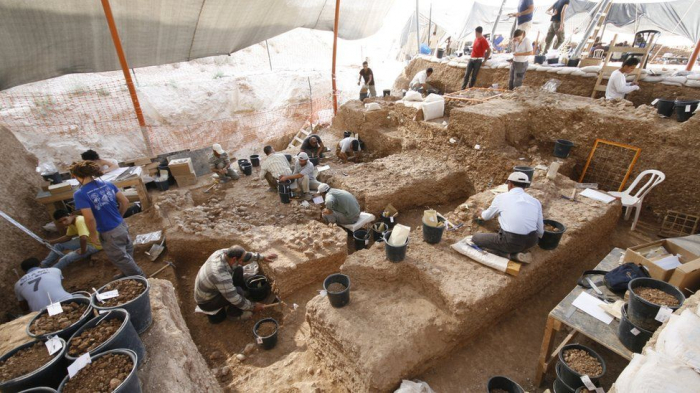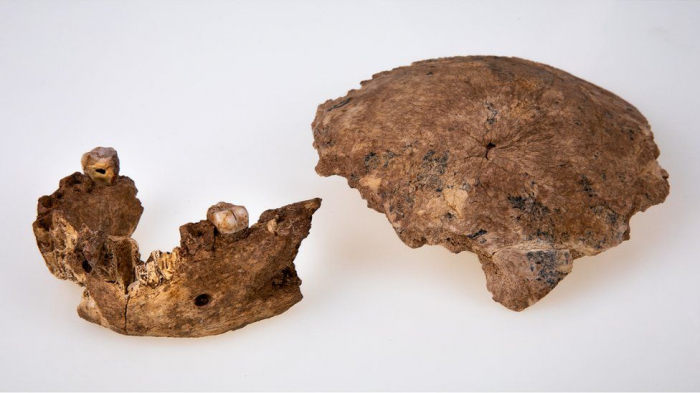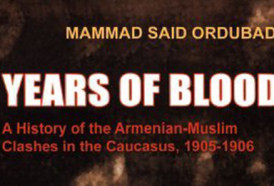They believe that the remains uncovered near the city of Ramla represent one of the "last survivors" of a very ancient human group.
The finds consist of a partial skull and jaw from an individual who lived between 140,000 and 120,000 years ago.
Details have been published in the journal Science.
The team members think the individual descended from an earlier species that may have spread out of the region hundreds of thousands of years ago and given rise to Neanderthals in Europe and their equivalents in Asia.
The scientists have named the newly discovered lineage the "Nesher Ramla Homo type".
Dr Hila May of Tel Aviv University said the discovery reshapes the story of human evolution, particularly those of the Neanderthals. The general picture of Neanderthal evolution had in the past been linked closely with Europe.
"It all started in Israel. We suggest that a local group was the source population," she told BBC News. "During interglacial periods, waves of humans, the Nesher Ramla people, migrated from the Middle East to Europe."

The team thinks that early members of the Nesher Ramla Homo group were already present in the Near East some 400,000 years ago. The researcher have noticed resemblances between the new finds and ancient "pre-Neanderthal" groups in Europe.
"This is the first time we could connect the dots between different specimens found in the Levant" said Dr Rachel Sarig, also from Tel Aviv University.
"There are several human fossils from the caves of Qesem, Zuttiyeh and Tabun that date back to that time that we could not attribute to any specific known group of humans. But comparing their shapes to those of the newly uncovered specimen from Nesher Ramla, justify their inclusion within the [new human] group."
Dr May suggests that these humans were the ancestors of Neanderthals.
According to an analysis by Dr Yossi Zaidner at the Hebrew University of Jerusalem, these tools were constructed in the same manner that modern humans of the time also made their implements.
"It was a surprise that archaic humans were using tools normally associated with Homo sapiens. This suggests that there were interactions between the two groups," Dr Zaidner said.
"We think that it is only possible to learn how to make the tools through visual or oral learning. Our findings suggest that human evolution is far from simple and involved many dispersals, contacts and interactions between different species of human."
More about: Israel
















































